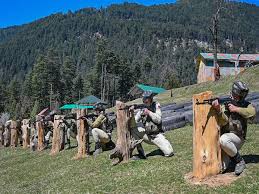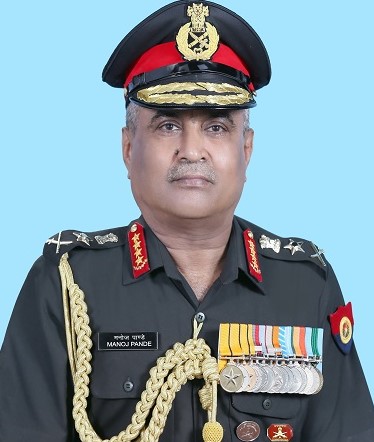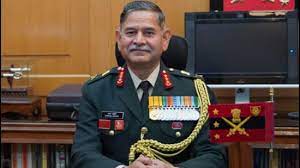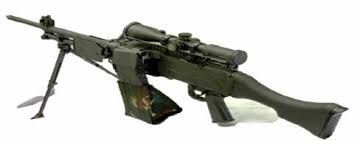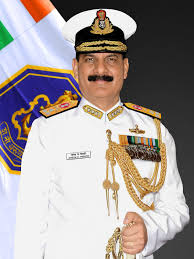The Chief of Defence Staff General Anil Chauhan initiated ‘Parivartan Chintan’ in New Delhi, highlighting the need for developing a joint culture for the Armed Forces.
He stated, “We need to distil the best of each service to give a de-novo approach to traditional concepts.”
The conference focused on generating fresh ideas, initiatives, and reforms to propel jointness and integration among the three services. “Chief of Defence Staff Gen Anil Chauhan initiated the
‘Chintan’ by highlighting the need for developing a joint culture for the armed forces, which, while respecting the uniqueness of each service, distils the best of each service to give a de-novo approach to traditional concepts,” the defence ministry said.
“He also stressed upon the need to integrate the capabilities of each service by creating structures that increase our efficiency and enhance our warfighting ability and interoperability,” it said in a statement.
The ministry said “jointness and integration” are the “cornerstones” of the transformation to joint structures which the Indian armed forces are progressing towards with the intention of being “future ready”.
The ‘Parivartan Chintan’ conference in Delhi was attended by officers from all three services and Headquarters IDS.
It basically focused on initiating the next generation of reforms related to modernization, procurement, training, and collaboration, while considering emerging technologies and national strategic issues.
Chief of Integrated Defence Staff Lt Gen JP Mathew expressed confidence that these interactions would guide the evolution of Joint Operational Structures towards a Future Ready Indian Armed Forces.
Key Points Addressed by Gen. Chauhan at the ‘Parivartan Chintan’:
The need for Jointness 2.0, reinforcing positives, and ensuring speed and momentum in the transformation to joint structures.
Larger-scale reforms aimed at developing a joint culture and quantifying integration efforts to increase efficiency, enhance warfighting ability, and ensure interoperability.
The importance of integrating the capabilities of each service through structured initiatives.
Deliberations on Theatre Commands:
The conference discussed how jointness and integration were essential for the implementation of theatre commands, a key part of the government’s defence reforms.
Gen. Chauhan highlighted the need to distil the best of each service while respecting their uniqueness, to bring a fresh approach to traditional concepts.
Cornerstones of Transformation:
The defence ministry highlighted “jointness and integration” as the cornerstones of the transformation to joint structures, ensuring the Indian armed forces are “future ready.”
The previous day, General Manoj Pande, the Chief of the Army Staff (COAS), had visited the Defence Services Staff College (DSSC) in Wellington, Tamil Nadu, to engage in crucial dialogue on national security, emerging global trends, and the Indian Army’s transformational initiatives.
His visit aimed to provide a comprehensive overview of the challenges and opportunities for the Indian Army in the realm of national security and technological advancements.
Key Dialogue Points:
General Pande addressed the faculty and officers of the 79th Staff Course, including 36 officers from friendly foreign nations, discussing a range of topics vital for today’s dynamic security environment.
He emphasized the necessity of cross-functional synergy among the three services, stating, “The three services must act together…We have to look at the entire spectrum of national security and then frame our responses accordingly.”
Threat Assessment and Readiness:
He highlighted the importance of effectively assessing threats through various methods and identifying capabilities, then reaching readiness within the policies, and responding appropriately within the National Security Framework.
Technology and Strategic Competition:
General Pande called technology the new strategic competition arena, emphasizing its weaponization across various domains.
He noted, “The nature of warfare is changing.
The very character of warfare is becoming more complex and lethal. New domains of warfare such as space, cyber, the electromagnetic spectrum, and information have emerged.”
Global Trends and India’s Stature:
Discussing the geo-strategic landscape and emerging trends, he highlighted the unprecedented scale and speed of change in the current global arena.
He pointed out the emergence of new trendlines triggered by this rapid change and stressed the importance of safeguarding India’s interests across expanding strategic horizons.
Year of Tech Absorption:
General Pande gave a special focus on the “Year of Tech Absorption” in 2024, emphasizing the key areas of emphasis in this initiative, including aligning and synergizing technology at multiple levels, mapping futuristic technologies, strengthening the defence technology ecosystem, and ensuring seamless technology induction through acquisition and procurement processes.
India’s Defence Capabilities and Self-Reliance:
General Pande stressed the importance of India being strong and self-reliant in its defence capabilities, achieving a strategic balance in the evolving geopolitical landscape.
He stated, “Wemust remain strong and self-reliant in defence. Achieving strategic balance is critical in the evolving geopolitical landscape.”
Closing Remarks and Vigilance:
In his closing remarks, the COAS urged the young officers to remain vigilant for “Black Swan” events, always expecting the unexpected in the dynamic world of national security.
He emphasized bringing transformation within the Indian Army, maintaining the highest standards of professionalism, and prioritizing organizational interests.
The visit and conference underscored the commitment of the Indian Armed Forces to enhance jointness and integration, ensuring they are “Future Ready” to tackle modern challenges and safeguard India’s interests effectively.
There were overlapping themes of discussion between the two conferences, with India’s future readiness at the crux of both.

